Public Archive
A patchy record of DIY satellite imagery and weather notes since 2020. The open-weather public archive is open to everyone willing and able to contribute.
Words for Climate
An evolving set of words chosen by contributors to reflect their experiences of the climate crisis.
Filter by
Ground Station Type
Automatic Ground Stations are local, semi-permanent stations that record and upload satellite transmissions automatically once per day. Manual ground stations are DIY and often mobile; operators manually record and upload satellite transmissions.
Satellites
The archive contains Automatic Picture Transmissions (APT) by US weather satellites NOAA-15, NOAA-18 and NOAA-19.
Nowcasts
Collective earth-sensing events led by open-weather, co-produced by a network of contributors around the world.
Contributors
A list of tagged contributors only. Please contact us if you want to be added.
Automatic Ground Stations
Search
2025-08-13 12:13:00
Foto Colectania
Hangar
Ràdio Web MACBA
Barcelona, Spain
Spain
NOAA-19

2025-08-12 21:41:00
Zack Wettstein
Seattle, United States
United States
NOAA-19

2025-08-13 07:27:00
Maufox
Mauritius, Mauritius
Mauritius
NOAA-15

2025-08-12 22:57:00
Heidi Neilson
Gilboa, New York, United States
United States
NOAA-19

2025-08-12 19:43:00
Zack Wettstein
Seattle, United States
United States
NOAA-15
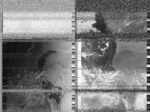
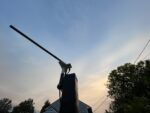
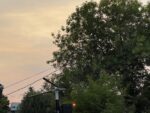
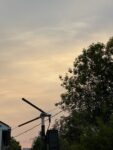
This may be one of the last images captured by our AGS in Seattle, which was decoded at dusk from NOAA 15, and it happens to be on one of our hottest days of the year, with a sun setting behind a large plume of wildfire smoke blowing into the Puget Sound from the Bear Gulch fire burning on the Olympic Peninsula. It is a stunningly striking and somber sunset, as we also witness the sunset on a program of instruments that have allowed use to capture and observe data in real time on the ground, all the way from LEO. It seems only appropriate that during these days of increasing heat and smoke are the times when we turn off these instruments to fly blindly into a future of anthropogenic climate change...
2025-08-12 19:20:00
Heidi Neilson
Gilboa, New York, United States
United States
NOAA-15
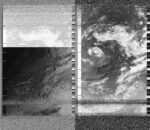
2025-08-12 11:53:00
Zack Wettstein
Seattle, United States
United States
NOAA-19

2025-08-12 20:18:00
Foto Colectania
Hangar
Ràdio Web MACBA
Barcelona, Spain
Spain
NOAA-15

2025-08-12 13:57:00
Nastassja Simensky
Longyearbyen, Svalbard
Svalbard
NOAA-19

2025-08-11 21:54:00
Zack Wettstein
Seattle, United States
United States
NOAA-19
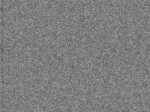
2025-08-12 07:54:00
Maufox
Mauritius, Mauritius
Mauritius
NOAA-15

2025-08-12 07:22:00
Oppressive Heat Project
Phnom Penh, Cambodia
Cambodia
NOAA-15
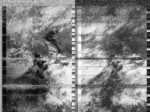
2025-08-11 08:47:00
Zack Wettstein
Seattle, United States
United States
NOAA-15

2025-08-11 08:26:00
Heidi Neilson
Gilboa, New York, United States
United States
NOAA-15
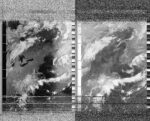
2025-08-11 10:55:00
Nastassja Simensky
Longyearbyen, Svalbard
Svalbard
NOAA-15

2025-08-11 09:25:00
Foto Colectania
Hangar
Ràdio Web MACBA
Barcelona, Spain
Spain
NOAA-15

2025-08-11 09:50:00
Maufox
Mauritius, Mauritius
Mauritius
NOAA-19

2025-08-10 22:07:00
Zack Wettstein
Seattle, United States
United States
NOAA-19

2025-08-10 19:24:00
Nastassja Simensky
Longyearbyen, Svalbard
Svalbard
NOAA-19

2025-08-10 09:13:00
Zack Wettstein
Seattle, United States
United States
NOAA-15

2025-08-10 08:57:00
Diana Engelmann
Filip Shatlan
Gainesville, Florida , United States
United States
NOAA-15
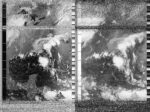
2025-08-10 08:52:00
Heidi Neilson
Gilboa, New York, United States
United States
NOAA-15

2025-08-10 09:51:00
Foto Colectania
Hangar
Ràdio Web MACBA
Barcelona, Spain
Spain
NOAA-15

2025-08-10 10:03:00
Maufox
Mauritius, Mauritius
Mauritius
NOAA-19

2025-08-09 22:19:00
Zack Wettstein
Seattle, United States
United States
NOAA-19

2025-08-10 09:30:00
Oppressive Heat Project
Phnom Penh, Cambodia
Cambodia
NOAA-19

2025-08-09 19:22:00
Zack Wettstein
Seattle, United States
United States
NOAA-15

2025-08-09 21:53:00
Heidi Neilson
Gilboa, New York, United States
United States
NOAA-19
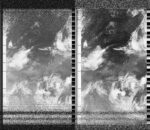
2025-08-09 22:49:00
Foto Colectania
Hangar
Ràdio Web MACBA
Barcelona, Spain
Spain
NOAA-19

2025-08-09 16:46:00
Nastassja Simensky
Longyearbyen, Svalbard
Svalbard
NOAA-15

2025-08-09 10:16:00
Maufox
Mauritius, Mauritius
Mauritius
NOAA-19

2025-08-08 22:32:00
Zack Wettstein
Seattle, United States
United States
NOAA-19

2025-08-08 19:48:00
Zack Wettstein
Seattle, United States
United States
NOAA-15

2025-08-08 22:06:00
Heidi Neilson
Gilboa, New York, United States
United States
NOAA-19
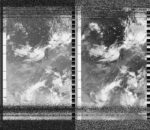
2025-08-09 07:00:00
Oppressive Heat Project
Phnom Penh, Cambodia
Cambodia
NOAA-15

2025-08-08 20:23:00
Foto Colectania
Hangar
Ràdio Web MACBA
Barcelona, Spain
Spain
NOAA-15

2025-08-08 12:25:00
Diana Engelmann
Filip Shatlan
Gainesville, Florida , United States
United States
NOAA-19
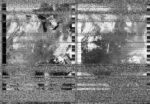
2025-08-08 17:12:00
Nastassja Simensky
Longyearbyen, Svalbard
Svalbard
NOAA-15

2025-08-08 08:09:00
Diana Engelmann
Filip Shatlan
Gainesville, Florida , United States
United States
NOAA-15
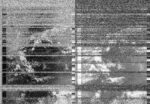
2025-08-08 10:29:00
Maufox
Mauritius, Mauritius
Mauritius
NOAA-19

2025-08-07 23:59:00
Diana Engelmann
Filip Shatlan
Gainesville, Florida , United States
United States
NOAA-19

2025-08-08 09:55:00
Oppressive Heat Project
Phnom Penh, Cambodia
Cambodia
NOAA-19
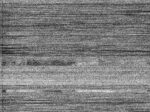
2025-08-07 20:02:00
Nastassja Simensky
Longyearbyen, Svalbard
Svalbard
NOAA-19

2025-08-07 08:52:00
Zack Wettstein
Seattle, United States
United States
NOAA-15
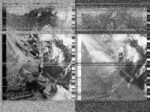
2025-08-07 08:30:00
Heidi Neilson
Gilboa, New York, United States
United States
NOAA-15
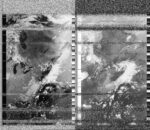
2025-08-07 18:56:00
Oppressive Heat Project
Phnom Penh, Cambodia
Cambodia
NOAA-15
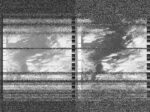
2025-08-07 09:30:00
Foto Colectania
Hangar
Ràdio Web MACBA
Barcelona, Spain
Spain
NOAA-15

2025-08-07 10:42:00
Maufox
Mauritius, Mauritius
Mauritius
NOAA-19

2025-08-06 22:58:00
Zack Wettstein
Seattle, United States
United States
NOAA-19

2025-08-06 20:15:00
Diana Engelmann
Filip Shatlan
Gainesville, Florida , United States
United States
NOAA-15
2025-08-06 11:05:00
Heidi Neilson
Gilboa, New York, United States
United States
NOAA-19
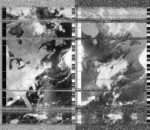
2025-08-06 21:30:00
Oppressive Heat Project
Phnom Penh, Cambodia
Cambodia
NOAA-19
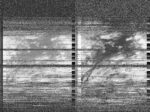
2025-08-06 09:02:00
Diana Engelmann
Filip Shatlan
Gainesville, Florida , United States
United States
NOAA-15
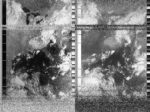
2025-08-06 13:32:00
Nastassja Simensky
Longyearbyen, Svalbard
Svalbard
NOAA-19

2025-08-06 12:01:00
Foto Colectania
Hangar
Ràdio Web MACBA
Barcelona, Spain
Spain
NOAA-19

2025-08-06 09:13:00
Maufox
Mauritius, Mauritius
Mauritius
NOAA-19

2025-08-05 20:02:00
Foto Colectania
Hangar
Ràdio Web MACBA
Barcelona, Spain
Spain
NOAA-15

2025-08-05 11:23:00
Diana Engelmann
Filip Shatlan
Gainesville, Florida , United States
United States
NOAA-19

2025-08-05 11:18:00
Heidi Neilson
Gilboa, New York, United States
United States
NOAA-19
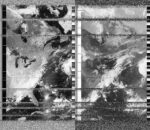
2025-08-05 16:51:00
Nastassja Simensky
Longyearbyen, Svalbard
Svalbard
NOAA-15

2025-08-05 21:43:00
Oppressive Heat Project
Phnom Penh, Cambodia
Cambodia
NOAA-19
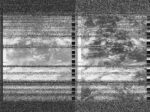
2025-08-05 12:14:00
Foto Colectania
Hangar
Ràdio Web MACBA
Barcelona, Spain
Spain
NOAA-19

2025-08-05 09:26:00
Maufox
Mauritius, Mauritius
Mauritius
NOAA-19

2025-08-04 11:54:00
Zack Wettstein
Seattle, United States
United States
NOAA-19
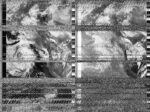
2025-08-04 20:28:00
Foto Colectania
Hangar
Ràdio Web MACBA
Barcelona, Spain
Spain
NOAA-15

2025-08-04 17:17:00
Nastassja Simensky
Longyearbyen, Svalbard
Svalbard
NOAA-15

2025-08-04 21:56:00
Oppressive Heat Project
Phnom Penh, Cambodia
Cambodia
NOAA-19

2025-08-04 09:38:00
Maufox
Mauritius, Mauritius
Mauritius
NOAA-19

2025-08-03 19:12:00
Nastassja Simensky
Longyearbyen, Svalbard
Svalbard
NOAA-19

2025-08-03 08:57:00
Zack Wettstein
Seattle, United States
United States
NOAA-15
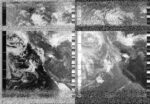
2025-08-03 08:35:00
Heidi Neilson
Gilboa, New York, United States
United States
NOAA-15

2025-08-03 19:01:00
Oppressive Heat Project
Phnom Penh, Cambodia
Cambodia
NOAA-15
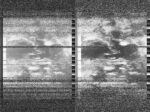
2025-08-03 09:34:00
Foto Colectania
Hangar
Ràdio Web MACBA
Barcelona, Spain
Spain
NOAA-15

2025-08-03 09:51:00
Maufox
Mauritius, Mauritius
Mauritius
NOAA-19
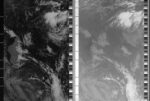
2025-08-02 22:08:00
Zack Wettstein
Seattle, United States
United States
NOAA-19
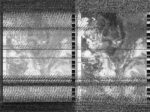
2025-08-02 21:42:00
Heidi Neilson
Gilboa, New York, United States
United States
NOAA-19
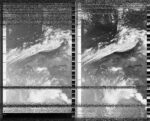
2025-08-02 22:38:00
Foto Colectania
Hangar
Ràdio Web MACBA
Barcelona, Spain
Spain
NOAA-19

2025-08-02 09:06:00
Diana Engelmann
Filip Shatlan
Gainesville, Florida , United States
United States
NOAA-15
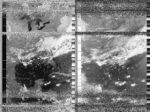
2025-08-02 14:23:00
Nastassja Simensky
Longyearbyen, Svalbard
Svalbard
NOAA-19

2025-08-02 10:04:00
Maufox
Mauritius, Mauritius
Mauritius
NOAA-19

2025-08-01 19:32:00
Zack Wettstein
Seattle, United States
United States
NOAA-15
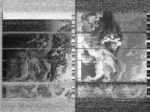
2025-08-02 09:31:00
Oppressive Heat Project
Phnom Penh, Cambodia
Cambodia
NOAA-19

2025-08-01 21:54:00
Heidi Neilson
Gilboa, New York, United States
United States
NOAA-19
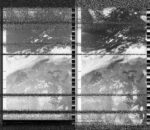
2025-08-01 22:50:00
Foto Colectania
Hangar
Ràdio Web MACBA
Barcelona, Spain
Spain
NOAA-19

2025-08-01 16:56:00
Nastassja Simensky
Longyearbyen, Svalbard
Svalbard
NOAA-15

2025-08-01 10:17:00
Maufox
Mauritius, Mauritius
Mauritius
NOAA-19

2025-07-31 22:33:00
Zack Wettstein
Seattle, United States
United States
NOAA-19
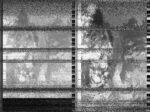
2025-07-31 22:07:00
Heidi Neilson
Gilboa, New York, United States
United States
NOAA-19
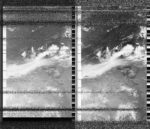
2025-08-01 07:10:00
Oppressive Heat Project
Phnom Penh, Cambodia
Cambodia
NOAA-15

2025-07-31 23:03:00
Foto Colectania
Hangar
Ràdio Web MACBA
Barcelona, Spain
Spain
NOAA-19

2025-07-31 10:43:00
Nastassja Simensky
Longyearbyen, Svalbard
Svalbard
NOAA-15

2025-07-31 10:30:00
Maufox
Mauritius, Mauritius
Mauritius
NOAA-19

2025-07-31 09:56:00
Oppressive Heat Project
Phnom Penh, Cambodia
Cambodia
NOAA-19
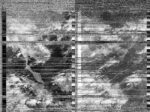
2025-07-30 19:58:00
Diana Engelmann
Filip Shatlan
Gainesville, Florida , United States
United States
NOAA-15
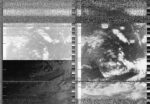
2025-07-30 23:16:00
Foto Colectania
Hangar
Ràdio Web MACBA
Barcelona, Spain
Spain
NOAA-19

2025-07-30 09:01:00
Zack Wettstein
Seattle, United States
United States
NOAA-15
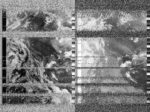
2025-07-30 08:44:00
Diana Engelmann
Filip Shatlan
Gainesville, Florida , United States
United States
NOAA-15
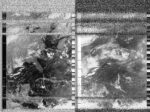
2025-07-30 08:40:00
Heidi Neilson
Gilboa, New York, United States
United States
NOAA-15
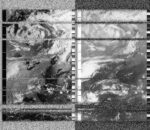
2025-07-30 19:06:00
Oppressive Heat Project
Phnom Penh, Cambodia
Cambodia
NOAA-15
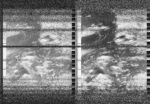
2025-07-30 11:09:00
Nastassja Simensky
Longyearbyen, Svalbard
Svalbard
NOAA-15
